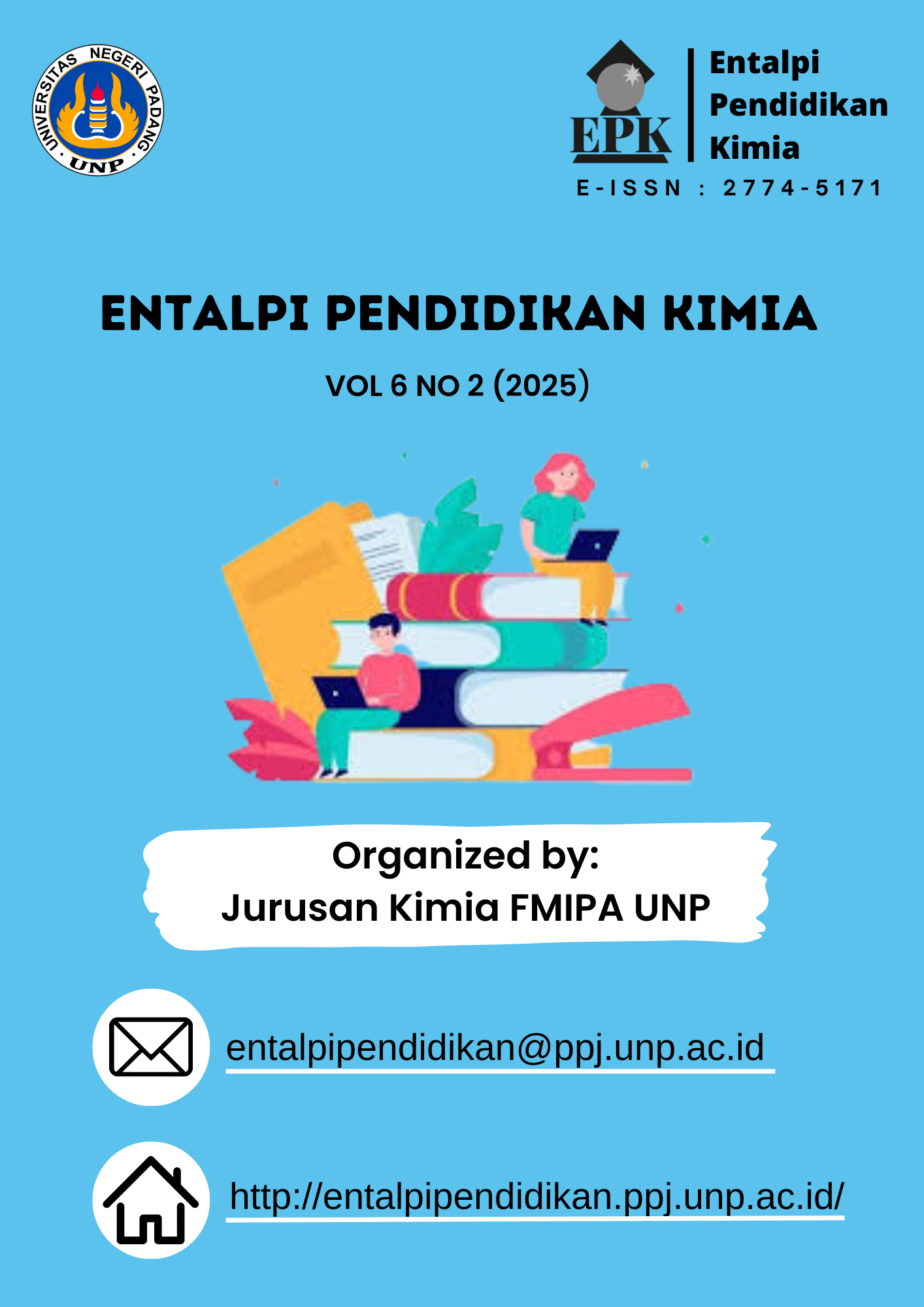Pengembangan E-Modul Titrasi Asam Basa Berbasis Guided Discovery Learning untuk Kelas XI SMA
Abstract
Revolution industrial 4.0 learning is an digitalization of era, especially in the field of education so that technology-based teaching materials are needed that can increase student activity in learning. This study aims to analyze the validity, practicality and effectiveness of the acid-base titration e-module based on guided discovery learning for class XI SMA. The research method used is educational design research with a plomp model consisting of a preliminary research stage, a prototyping stage, and an assessment phase. The research subjects consisted of 8 validators, 6 people in the small group and 18 students in the field test. The research instruments used were validity questionnaires, practicality test questionnaires and student answer sheets on e-modules. Data were analyzed using Aiken's V formula and descriptive statistics. The results of the content validity test and obtained the average value of Aiken's V of 0.95 with a valid category. The results of the construct validity test and media expert validation obtained the average value of Aiken's V 0.89 in the valid category and 0.95 with the valid category. The results of the one-to-one evaluation show interesting e-modules, clear letters and easy-to-understand language. The results of data analysis in the small group test obtained an average percentage value of 87% in the very high category and 88% in the field test stage in the very high category. This data is evidenced by the ability of students to answer e-module questions at the small group stage and field test of . Based on the data analysis, it was concluded that the acid-base titration e-module based on guided discovery learning for class XI SMA was valid, practical and effective.Copyright toward articles published by Entalpi Pendidikan Kimia is hold by Entalpi Pendidikan Kimia. In the other side, Entalpi Pendidikan Kimia also applied CC Attribution 4.0 which means you could 1) share — copy and redistribute the material in any medium or format; and 2) adapt — remix, transform, and build upon the material; for any purpose, even commercially. As long as you give us attribution — You must give appropriate credit, provide a link to the license, and indicate if changes were made. You may do so in any reasonable manner, but not in any way that suggests the licensor endorses you or your use. Entalpi Pendidikan Kimia also applied Open Access toward each published articles, so the published content will be available freely for public.





